I grew up thinking that African Americans were of a different race than Caucasian Americans. I had always thought that there was something genetically distinct about people who descended from Africa, had darker skin, woolier hair, and a broader nose. I heard the stereotypical stories that Black people had less intelligence, enhanced athletic abilities, and other race-specific attributes. This past year, my understanding has dramatically evolved.
Beginning last summer, I decided to devote much of my time and energy to issues related to Black Americans. I have read many books and articles, listened to speeches, watched videos and movies, volunteered my time, and visited with people who are involved in the struggle for racial equality. While I have not become an expert, I have been learning from experts and one surprising reality has opened my eyes: The concept of race itself is forged from myths and misinformation. Race is a social construct invented in modern times to support the enslavement of dark-pigmented people from Africa. Being a teacher at heart, I wrote this paper to share the following:
- There is no genetic basis for using the term race to categorize people.
- The language and “science” of race were invented to support Black African slavery and have been perpetuated to sustain the ongoing repression of Black people.
- Religious beliefs, with pseudo-scientific backing, were set out to place race in the hands of God.
- Intelligence tests were used to “prove” that racial distinctions were important, and Blacks were inferior.
We are all biologically 99% the same and our similarities should guide our practices and policies. I hope that we can collectively come to understand the origins of the concept of race and thereby truly understand the origins of racism. By getting to the roots of racism, we can open the doors to greater harmony in our country and around the world.
At the end of this paper, I provide a listing of the source material that led me to these discoveries. Many references include links that you can follow and explore.
Race and Genetics: A Dead End. When you submit your cheek-swab to a genome sequencing company, they can tell you that you are 45.3% Balkan and 0.8% Eastern European. They can tell you whether you have asparagus odor detection or if you are going to have a bald spot. But they cannot tell you whether you are Black or White. They cannot determine your race. There is a reason for this: race is not a genetic distinction. It is purely a social determination, a judgment call made on a case-by-case basis.
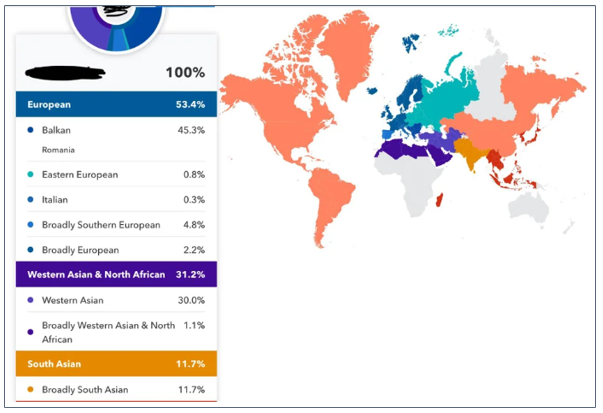
The National Geographic Society’s Genographic Project has collected gene samples from nearly 1 million people since 2005 and they publish highly informative material to help us all understand the facts about race. Their March 12, 2018 article, There’s No Scientific Basis for Race – It’s A Made-Up Label (link provided below), provides many insights. Humans, homo sapiens, were all living on the African continent beginning around 200,000 years ago. We started to migrate out of Africa 60,000 years ago. We all originate from a common, African gene pool.
As we migrated around the planet, four different genes that control melatonin (skin color) mutated to adapt to different environments. Some of us got darker than our ancestors while many of us got lighter. Dark skin proved beneficial near the equator, as it shields against UV light. In areas with less sun exposure, lighter skin proved beneficial for the body to collect ample UV radiation for synthesizing vitamin D.
Nasal features also mutated as part of the migration. Thomson’s Nose Rule was published by Arthur Tomson in 1923 and has recently been validated through studies at Penn State University that I reviewed. People who migrated to colder and drier climates developed longer and thinner noses. Those who resided in warm, humid climates developed broader and shorter noses. Scientists have not been able to determine why hair quality is different around the world, but there has been some research to explore the connection between mutations in hair genes as a way to fend off local parasites, like lice.
Popular Science recently published DNA Tests Can’t Tell You Your Race in which they quote Sarah Tishkoff, a professor of genetics and biology at the University of Pennsylvania: “It’s fundamentally flawed to think that a genetic test can figure out race. The biggest issue is distinguishing between ancestry and race. Race is a socially constructed concept.” [my underline] There is no genetic basis for race. Our genes are 99.9% the same.
Even the US Census Bureau makes it clear that race is purely a social distinction: “The Census Bureau defines race as a person’s self-identification with one or more social groups. [my underline] An individual can report as White, Black or African American, Asian, American Indian and Alaska Native, Native Hawaiian and Other Pacific Islander, or some other race.” In fact, I found that the Census Bureau has actually changed racial categories from time to time to reflect social and economic shifts, but not as a result of new biological data. The bureau employs the term race to track and support social and political programs.
Race, Language, and Science: Follow the Money. When slave trading from Africa to Europe began in the 15th century, race and racism were born to justify the obvious inhumanity. The articulation of the term race and the notion that Black people were inferior grew over time as the enslavement of Blacks from Africa became increasingly central to the economic power of the emerging United States. Ibram X. Kendi, in his important and well-referenced book, How To Be An Anti-Racist, outlines the literary history of what would eventually be labeled as a race. My follow-up research into his and other references validates this storyline.
Under the leadership of Henry the Navigator in 1442, who was related to both the Portuguese and English royal families, Portuguese sailors made history when they navigated around the Saharan bulge to West Africa and then returned with dark-skinned slaves. Gomes de Zurara, a royal chronicler, finished the first European book on Africa in 1453, The Chronicle of the Discovery and Conquest of Guinea. He served the needs of the Crown by debasing the Blacks from Africa to convince his readers that these people were best suited for slavery. In describing a 1444 slave auction in Lagos, Portugal, Zurara explains that “Some captives were ‘white enough, fair to look upon, and well proportioned,’ while others were ‘like mulattoes’ or ‘as Black as Ethiops, and so ugly.’” Historians do not see evidence of this negative view towards darker-skinned people before this time. Rather, the new viewpoint came with the rise of Black African enslavement.
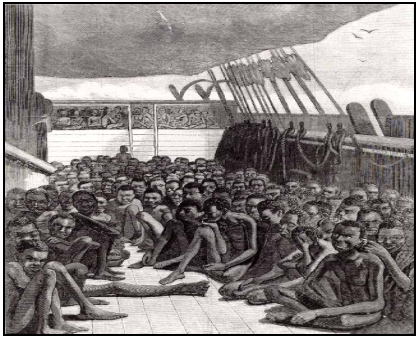
In 1606, a year before the official founding of Jamestown, the term race was formalized and defined. Jean Nicot was a French diplomat and writer who brought tobacco from the Americas to France. Nicotine was named after him by Carl Linnaeus, whose work also played a role in the pseudo-science of race, some hundred years later. Nicot defined the word “race” for the first time ever in a major European dictionary, the Trésor de la langue française. “Race…means descent. . . Therefore, it is said that a man, a horse, a dog, or another animal is from a good or bad race.” Read this definition and realize its intent. The purpose of this definition is to make Black people look less than human. This helped lay the groundwork for Europeans to use race to establish a hierarchy of human types, which would prove useful as the tobacco industry grew in the new colonies.
When European colonists arrived in the Caribbean and the mainland of today’s United States, they were unable to extract profits as they had in previous western conquests. In Mexico and South America, gold was plentiful, and natives could be coerced into producing large, lucrative quantities. But this New World was not rich with gold and colonists needed to grow labor-intensive cash crops like tobacco, sugar, rice, and later cotton to extract big profits. Indigenous Americans were exceptionally resistant to forcible control and were also terribly susceptible to smallpox, measles, and flu carried by their invaders. Therefore, they did not suffice as the labor force. The colonists had indentured servants, but their labor was not perpetual nor was it always free.
African-born slaves were their owner’s property for life and were the answer to this labor-intensive economy. Slave status was passed on through the mother’s lineage, and it was either legal by written doctrine or judicial practice for slave masters to rape their slaves. This meant that Black African slaves gave birth to babies who grew up as new human property, new Black slaves, in perpetuity. Some 600,000 Black slaves were eventually brought from Africa to the American colonies from the early 1600s to 1863. Black slavery was a powerful economic tool for the emerging colonies, and pseudo-science along with pseudo-religion supported its inherent inhumanities.
Carl Linnaeus’s publications provided some of that pseudo-scientific support. He was a Swedish-born scientist, the “Father of Modern Taxonomy,” whose seminal work was Systema Naturae, written and iterated during the mid-1700s. Linnaeus classified living (and imaginary) things into organized taxonomies. He color-coded and ranked four races as White, Yellow, Red, and Black, and he explicitly stated that Blacks (Homo sapiens afer) were at the bottom of the hierarchy. His words were powerful and influential. They helped create the climate for slavery. The following is taken directly from How to Be an Antiracist, a book that has made a big impact on me:
Linnaeus positioned Homo sapiens europaeus at the top of the racial hierarchy, making up the most superior character traits. “Vigorous, muscular. Flowing blond hair. Blue eyes. Very smart, inventive. Covered by tight clothing. Ruled by law.” . . . At the bottom of the racial hierarchy, Linnaeus positioned Homo sapiens afer: “Sluggish, lazy. Black kinky hair. Silky skin. Flat nose. Thick lips. Females with genital flap and elongated breasts. Crafty, slow, careless. Covered by grease. Ruled by caprice.”
For the new colonies to deliver wealth to the lead settlers, Black African slavery was essential. For the horrific realities of Black African slavery to remain acceptable, one thing needed to be clear: Black Lives Did Not Matter. Hindsight is 20/20, and this reflection on the past is clear as day.
Race and Religion: How Science Can Follow Beliefs. From the late 1500s through the 1700s, religious propositions were advanced to validate race and prove that people from Africa with darker skin were inferior in God’s eyes. The Curse of Ham is one example that seems pretty crazy in our modern context but actually served as one of the last lines of defense for southern slaveholders in the 1860s. The Book of Genesis explains the curse like this:
Ham was Noah’s son. Ham saw Noah naked. Noah was furious at Ham. Noah cursed Ham’s son; whose name was Canaan. Canaan’s offspring and their descendants would all be cursed.
So, who would these cursed Canaanites be? There are many references to the Canaanites in the bible, describing them as undesirables living throughout the regions of the southern Levant or Canaan. George Best popularized the notion that these cursed Canaanites were Black people. He was an English writer who, like the Portuguese Gomes de Zurara before him, chronicled exploration by sea along with descriptions of various distant lands visited in his trading profession. In 1578, he wrote the widely popular True Discourse, apparently enjoyed by Brits as an exotic travel log. This travel log included a description of the “Blacke and loathsome” Africans, who were the cursed posterity of Canaan and “a spectacle of disobedience to all the worlde.” A travel writer advanced a religious theme and his words started a ball rolling. The Canaanite explanation for Black inferiority endured over time. Martin Luther King was forced to debunk this perversion of Christianity in the 1950s, calling such thought “a blasphemy” that “is against everything that the Christian religion stands for.” A simple Google search will reveal numerous recent articles and religious discussions about the Curse of Ham and its justification for racism and slavery.
Polygenesis is another line of religious thought that posed an even more fundamental difference between races. The source of strong debate from the 1600s through the 1800s, polygenesis proposes that there was more than one Adam and Eve. Isaac La Peyrère published Prae-Adamitae in Latin in 1655 and Men Before Adam in English in 1656. He attempted to make a case for the inferiority of Black people as well as other non-European civilizations. While his work was regarded as heresy, landing him in jail, these theories moved forward and were the subject of debates at the highest level of civil discourse.
Scientists got involved in proving that God disfavored Blacks. Fervent belief in polygenesis led Samuel Morton, a physician and natural scientist from Philadelphia, to “prove” that Black skulls were smaller than others, that Blacks were, therefore, less intelligent, and that this could only be accounted for through polygenesis: more than one creation. From 1823 to 1851, he measured the capacity of 256 skulls from around the world by filling them with white pepper seeds and later with shotgun pellets. He repeated the process with 672 skulls to further emphasize his conclusions. His published results, under the umbrella of Craniology, led him to conclude that Blacks had the smallest brains and that his assumptions were all correct.
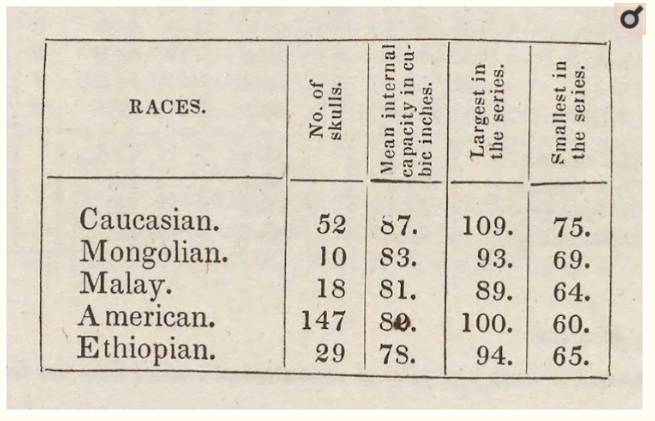
Friedrich Tiedemann did the same work in Heidelberg, Germany right around the same time. His data from 248 crania very closely mirrored that of Morton. His conclusions, however, were totally different. Tiedemann concluded that differences in cranial capacity across all five “races” he studied (as shown in Morton’s notes above) demonstrated no racial differences in cranial capacity and intelligence: “The principal result of my researches on the brain of the Negro, is, that neither anatomy nor physiology can justify our placing them beneath the Europeans in a moral or intellectual point of view”.
What accounts for the difference? How could two scientists collect virtually identical data and then come to completely divergent conclusions? The answer is simple: Bias. A recent, widely shared paper by a graduate student Paul Wolff Mitchell at the University of Pennsylvania provides a deep analysis of Morton’s original notes. Morton had studied many writings about “non-Caucasian” people written by travelers and ethnologists, and Morton had noted his own negative opinion about the intelligence of Black people, stating that they were “susceptible to cultivation.” These attitudes influenced his research, and he ultimately concealed a huge factor in his findings: body size. The African skulls studied came from people of smaller body size. Both cranium and brain size are known to be proportional to body size. No one has ever argued that smaller people are less intelligent than larger people. Morton’s cranial data was not biased, but his assumptions and resulting conclusions were. Over time, the scientific community discredited his work.
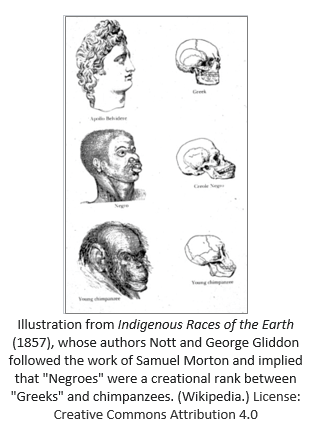
Charles Darwin’s work on evolution helped to quash enthusiasm for craniology and for polygenesis. In his world-changing book of 1859, On The Origin of Species, Darwin explained that he had been a believer in polygenesis but came to realize that the differentiation between human types took place through evolution. Darwin disavowed his adherence to polygenesis and was a strong abolitionist. Randall Fuller, a professor of English and Civil War expert, published The Book That Changed America in 2017. He argues that Darwin’s work played a major role in removing support for slavery and fostering a climate for emancipation, which was declared just four years after Darwin’s masterpiece was published. Neither religion nor science could support the enslavement of Black Africans any longer.
Guns, Germs, and Steel by Jared Diamond offers a compelling take on social evolution that helps to explain how people of European descent came to dominate over those that remained in Africa. Diamond offers strong evidence that the geographic location of given civilizations of people have played the single largest role in how those civilizations have fared over time.
Evolution helps us to understand skin color, nasal structure, and even the relative political strength of different groupings of people. There are no separate races. Instead, there are evolved differences between cultural groupings that either remained in Africa or began migrating from Africa 60,000 years. We are all one people, and our destinies were strongly influenced by the places where our ancestors planted their roots.
Race and Intelligence: No Correlation. Literacy. Mathematical reasoning. Problem-solving. Verbal articulation. We measure intelligence in many ways and as we gain increased exposure to people from different world communities, we come to realize how intelligence is certainly not concentrated in White people. But do we accept the innate intelligence of Black people? As recently as the 20th century, measures of IQ (intelligence quotient) were used in ultimately failed attempts to prove that Black and brown individuals lack intelligence. IQ tests were popularized by Lewis Terman in the early 20th century. Terman led a group of psychologists in testing 1.7 million U.S Army recruits during World War I, to find those best qualified for leadership positions. Terman famously reported that the test scores demonstrated significant shortfalls in Black intelligence. Yet, the flaws in the process tell a compelling story about the social roots of racial distinctions.
Blacks who took this test came out of a bankrupt educational environment. Slaves were prohibited, by laws dating back to 1740, from receiving any literacy education in eight southern states and were afforded little education in other states. Right after the Civil War, the Freedman’s Bureau Acts funded some positive momentum in Black schooling, including support for historically Black colleges and universities (HBCUs). But that funding only lasted for 5 years, after which time a rise in Ku Klux Klan activity followed by the enactment of Jim Crow laws led to further educational repression for Blacks. The NAACP reports that as late as the 1920s, after Terman’s infamous IQ testing, Georgia spent just $5 per year on each African-American student as opposed to $36 on each White student. Only 19% of 14-to-17-year-olds were enrolled in high school at the end of the 1930s. Black people who took Terman’s IQ test were certainly not on a level educational playing field with their White peers.
Terman’s work opened a Pandora’s box of debate. It is difficult to measure innate intelligence as opposed to academic achievement and cultural experience. IQ test biases have become the object of much critical attention, leading the State of California to legal battles since 1979 over the use of IQ tests for African American students. Many school districts favor the use of literacy and mathematical assessments over controversial IQ tests. To see how these controversies started we can examine four sample questions from Lewis Terman’s 1916 test:
Unscramble the sentence. Then, say whether it is true or false.
1. happy is man sick always a 2. day it snow does every not
Complete the Picture
3. 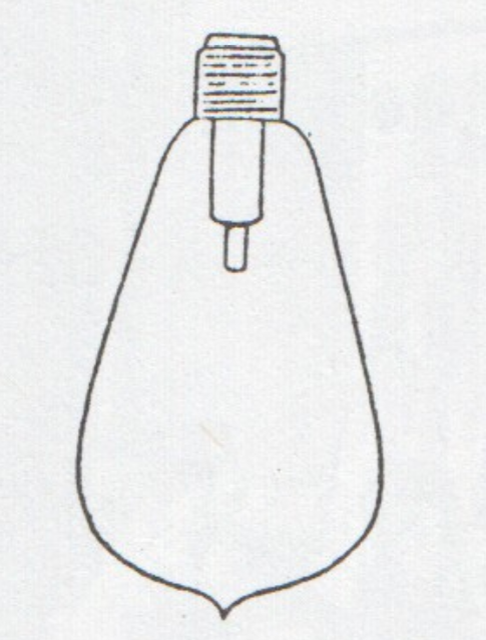 4.
4. 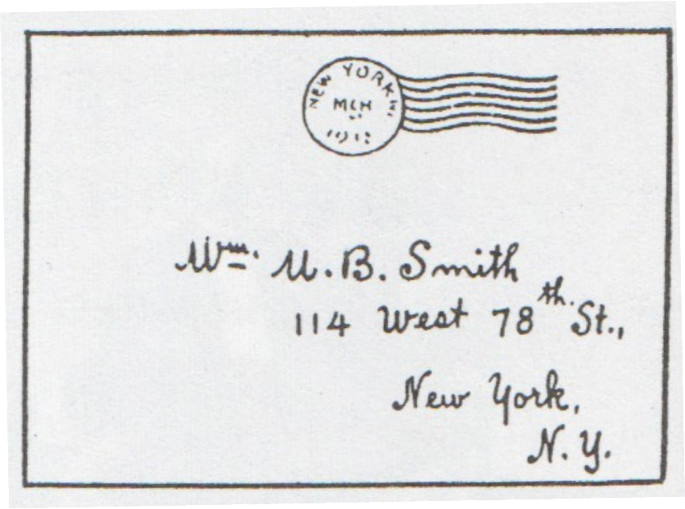
The questions were difficult for people to answer, especially those who lacked education and specific cultural exposure. Items 1 and 2 require literacy skills that were denied to many of the Black army recruits. Item 3 is missing the filament of the light bulb. Answering this requires familiarity with light bulbs, which cost $1.95 each in 1909. That would be around $33 each today. By the 1930s, only 10% of rural households even had electricity. To understand that item 4 is missing a return address, a person would need access to both literacy education and the US postal service. Black people in 1916 –1919 would be far less prone than their White peers to be able to answer these questions.
Terman’s conclusions were dire for Blacks and other minorities. While he declared that the average intellectual age of American adults was only 13.7 years old, he also claimed that IQ was influenced by race and ethnicity, with Black people scoring much lower than average. By the 1920s, over 1 million children, as young as kindergarten age, were being subjected to IQ tests that were laden with strong cultural biases each year. The results were being used to segregate students based upon their scores, and hence, by the color of their skin. Terman was charismatic and his work had a profound effect on segregating Black and Latino students through much of the 20th century.
Brown vs Board of Education, the Supreme Court ruling in 1954 that declared separate but equal education for Blacks and Whites as unconstitutional, was just the beginning of a sea change in acknowledging the potential for Black children to achieve. A decade after the historic ruling, 98% of Black students were still in all-Black schools. The Civil Rights Act of 1964 finally banned discrimination on the basis of race for all federally funded programs, including schools, and things began to change.
Educational leaders now see that Black children have intellectual potential equal to their White peers. The National Assessment of Educational Progress (NAEP) has been testing seventeen-year-olds since 1971. From 1971 to 1996, the Black-White reading gap shrank by almost one half and the math gap by almost one third. National Black-White achievement gaps analyzed by Stanford University’s Educational Opportunity Monitoring Project were 30-40% smaller in 2012 than they were in 1972. The lack of resources and opportunities in Black communities has made it difficult to further close those gaps. But one thing is clear, the chromosomal shifts that reflect environmental responses in skin color and the shape of the nose do not affect intelligence.
Race in Our Future: An Obsolete Narrative. There was a time when race made sense, in some horrific narrative. Colonists needed slave labor to make the United States lucrative. To justify owning and exploiting these darker-skinned human beings shipped over from Africa, colonists turned to religion and science to demonstrate that these Black lives simply did not matter.
We now know that the narrative of race is false. We also know that many of our social, economic, and political structures were originally designed to reflect enduring attitudes about race. It is time for those attitudes to change. I am not advocating that we pretend there is no such thing as race in our society. This would certainly be unfair to Black Americans who have been on the short end of the stick for almost 600 years and still need a lot of support to share common ground with Americans of White privilege. Instead, I ask each of us to realize:
Race is an idea that was recently created to minimize the importance of Black lives. We all come from Africa. Many of us derive genes from those who migrated away from Africa and developed characteristics that have changed the color of our skin and the shape of our noses. White people share 99% of DNA with Black people. The time has come for White Americans to share 100% of our respect, resources, and opportunities with Black Americans as well. Let us take this first step toward understanding and then move forward with the social, economic, and policy changes we need in order to put Black Americans on a level playing field with White Americans.
I want to thank Dalbir Khalsa, Dr. Kevin Fledman, and Ryan Janos for their feedback in helping me to craft this paper.
Please post your own comments below so that we can move this conversation forward.
Comments will appear in the thread after they clear some security procedures.
Source Material / References
I read five books that made a big impact on my thinking about race. I then read many articles and followed a number of Wikipedia searches. I am listing the resources that meant the most to me. I am providing links for your convenience rather than emphasizing standard citation protocols.
The Books That Got Me Started, In Order of Their Impact on Me
– Ibram X. Kendi. How to Be an Anti-Racist.
– Zora Neale Hurston. Their Eyes Were Watching God. (my note – this is a novel that opened my eyes)
– Jared Diamond. Guns, Germs, and Steel.
– Robin DiAngelo, PhD. White Fragility: Why It’s So Hard For White People To Talk About Racism.
– Ijeoma Oluo. So You Want to Talk About Race.
Race and Genetics: A Dead End
– A’ndrea Elyse Messer. Penn State News. Nose form was shaped by climate.
– National Geographic Society’s Genographic Project
– National Geographic, There’s No Scientific Basis for Race – It’s A Made-Up Label.
– Popular Science Magazine. Dec 27, 2019. DNA tests can’t tell you your race.
– The Smithsonian. The Historical Foundations of Race. https://nmaahc.si.edu/learn/talking-about-race/topics/historical-foundations-race
– US Census document stating that race is a social designation. Further information from the US Census Bureau.
– Vivian Chou, Harvard University, Science in the News. http://sitn.hms.harvard.edu/flash/2017/science-genetics-reshaping-race-debate-21st-century/
– Zaidi et al. PLOS Genetics. Investigating the case of human nose shape and climate adaptation.
Race, Language, and Science: Follow the Money
– James H. Sweet. The William and Mary Quarterly, Jan. 1997. The Iberian Roots of American Racist Thought.
– Jeffrey J. Pokorak. Nevada Law Journal. Rape as a Badge of Slavery: Legal History of, and Remedies for, Prosecutorial Race-of-Victim Charging Disparities.
– PBS video. Why Did Europeans Enslave Africans?
Race and Religion: How Science Can Follow Beliefs
– Paul Wolff Mitchell. Public Library of Science. Oct. 16, 2018. The fault in his seeds: Lost notes to the case of bias in Samuel George Morton’s cranial race science.
– Photo. Potsdam University. https://www2.potsdam.edu/mausdc/class/495/2002/slavetrade.html
– The Atlantic Magazine, January 27, 2017. The Book That Bettered America.
– The Washington Post, February 9, 2017. Did Darwin’s theory of evolution encourage abolition of slavery?
– Wikipedia: Curse of Ham
– Wikipedia: Josiah C. Nott
– Wikipedia: Samuel George Morton
Race and Intelligence: No Correlation
– Armed Services Vocational Aptitude Battery, The ASVAB. Sample Army Alpha/Beta Questions.
– The Educational Opportunity Monitoring Project, Stanford University. Racial and Ethnic Achievement Gaps.
– Tyack et al. Beacon Press. 2001. School: The Story of American Public Education.
– Wikipedia: Black School
– Wikipedia: Racial achievement gap in the United States
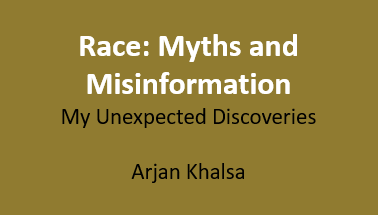
Thank you, Arjan for sharing your thoughts and your growth. I have been reading many of the same books and have learned so much, and know I have so much more to learn. Any time you want to have a conversation about this, I would love to be a part of it.
Beth
Thank you for this article.
Arjan, thank you so much for this excellent article. Keep ’em coming. Are you posting this on social media as well? I’d like to share.
I posted this on Facebook today. You should be able to find it and share it from my feed. I am not a Facebook pro. If you have any difficulties sharing this, please let me know.
Hi Arjan and thanks!! Don’t be cross with me for saying that I knew all this without the studying! However I also know that all the studying is important to make data-based affirmations. Lots of love you to you over there from us over here.
A great book I read a few years ago, one I highly recommend, is The Other Slavery by Resendez. It opened my eyes to the slaughter and oppression of native peoples in the Americas including how blacks were brought from Africa to the Americas to work in mines because they could tolerant the underground heat better. Although this book focuses on the enslavement of native peoples, it seems to underline how exploitation, slavery, and indentured servitude was a cultural norm that arrived with Europeans.
This is wonderful – thank you for putting it all together. Another great source for understanding the history of “race” is the “Seeing White” podcast from the Center for Documentary Studies (CDS) at Duke University: https://www.sceneonradio.org/seeing-white/
Arjan, Thank you for this excellent article. It has been said that ignorance comes in all colors and your article is a great proof of it. With your permission, I will share it through my FB wall.
Thank you Arjan for sharing your in-depth research and thoughts on this important topic. The recent events have shaken our complacency globally. It has been good to question our own biopic thinking and bias in the way we regard external differences in human beings. Hopefully, education and exposure of facts and individual commitment will lead to structural changes of equity in our communities. David Olusoga’s “Black and British: A Forgotten Past” book that accompanies a current BBC documentary also gives a great perspective on this subject.
Arjan, thank you for sharing. I also have been thinking a lot about this issue and trying to get myself better educated on my while privilege.
What you have created is very similar to a terrific podcast series I have been listening to…Seeing White. Highly recommend it.
And, I know that a lot of folks are asking what they can/should do. Some of my staff (and I) have committed to Justice in June https://justiceinjune.org/ which gives you something to read/listen to in 10 min/30min and 45 min increments. I have found it very helpful…and it could easily be done in July or some other time.
Bravo, Arj! You have been on my mind of late, and as usual, I am not surprised to find that you have been productive in this bizarre time. Your excellent synthesis of all you have read and learned about the strange history of racism has really piqued my interest in reading more. Thank you for opening my eyes, yet again, to another opportunity for personal growth! Miss you, dear friend. Be well.
Without disputing any of the above, please allow me to strongly recommend the book “The Year 1000” by Valerie Hansen of Yale. This lays out many facts that our Western-European-centric viewpoint often misses.
1. In the year 1000 (or thereabouts); Western Europe was very much a backwater. Elsewhere in the world there were large, well-organized civilizations with long-established inter-continental trade routes.
2. One of the most lucrative commodities was … SLAVES. Slaves taken *from* anywhere, were sold *to* anywhere, according to supply and demand. The Vikings were very good at this.
3. Slaves were obtained from wherever it was possible and convenient to transport them. Slaves from West Africa were not unique. Overland trade routes covered all of Africa.
4. The Portuguese didn’t “discover” trade routes: they simply stumbled upon long-existing connections that were already transporting commodities of value, such as gold and slaves.
5. Western Europeans combined two attributes to subsequently dominate the world: [a] they sailed to the Americas, and found vast amounts of resources and land to plunder; [b] they had “Guns, Germs and Steel”, i.e. superior military/domination technology. Genghis Khan, Tamerlane or any other conqueror: would have had no qualms in doing the same, if they’d had the opportunity and the wherewithal.
6. The Western European ‘discovery’ of the Americas was (almost) contemporaneous with the rise of industrialism and the demand for large-scale delivery of agricultural products such as sugar and cotton. This, in turn, made the concept of the “Plantation” a profitable enterprise: which, in turn, needed labor. Prof. Hansen’s book discusses the *absence* of agricultural slavery in China … due, she claims, to the adequate supply of labor there.
Consequently, I believe that “African-American Slavery” was *not* necessarily a unique moral travesty: but was (unfortunately) simply a continuation of ‘business as usual’ in the world of that time: enhanced by what *was* unique, i.e,. the combination of [demand for agricultural products] + [unlimited amounts of land to be cultivated] + [trade-winds triangular sailing routes].
Sir Kenneth Clark often opined that ‘Civilization barely survived the Dark Ages’.
Educated people in Persia or India or China would politely disagree.
‘Westerners’ do ourselves a dis-service by not realizing the complexity and sophistication of non-Western societies in history.
Thank you Arjan. This is a great read and written so well as to make it an easy read. You collected and articulate facts and information which I’ve not been aware of. You make the striking point early on, driven by a desire by White people for cheap labor, it was all hands on deck for several centuries to prove that “Black lives do not matter.” Culturally and attitudinally as a society we are coming from this insupportable point of view regardless of what individual attitudes we may have today. And there is little question that we each are to some degree products of our cultures. As I’ve been learning myself over the last several months, what I say I believe may not be reflected in what I in reality tolerate. Believing in right is not the same as not tolerating wrong. Believing in equality is important, acting against racism is an imperative.
Thank you Arjan for this meticulously researched, fascinating treatise. All new to me. And truly eye opening. Gary
Hi Arjan, bell hooks has written many books that are very accessible discussing these topics and issues – Where we stand: Class Matters, Teaching to Transgress, Teaching Critical Thinking. Race is a social construct, even though we have been taught to see it as a fact differentiating different …what, people, humans? Inequities in education have done a great job in maintaining stereotypes. Peter Block has written a lot on community, and what that really means, and Sendhil Mullainathan’s book “Scarcity” puts into terms that are easy to understand, just how something as simple as how the concept of scarcity can perpetuate for generations, any movement forward from the status quo for so many.
Your paper is especially timely given what is finally becoming public knowledge about how differently some citizens are treated compared to others. You’ve researched this and written with great insight into what “race” is and what it is not. I can say, however, from having helped “grow” two of my grandchildren (and talking at length with their father) that there are clear differences in how he has been treated as an adult. My desire for my grandchildren is that they have the same opportunities as any other child.
Hi Arjan, I just read your excellent and well-researched essay. Thank you for writing it and sharing it with me. When we last met, and you bought me lunch, I remember you shared you were going to focus on education and race. Great to see your first product! Thank you for listing the books and articles you’ve read. Super helpful. Have you come across Christopher Emdin’s https://chrisemdin.com/ work yet? I think you’ll appreciate where he’s coming from. Also, we’ve just started to look at this https://courses.equitymeetsdesign.com/. I was made aware of it by our partner at the Lawrence Hall of Science. I look forward to reading what you next publish! Take care.
Thank you Arjan for this thoughtful piece. It is clear and well written and helpful in so many ways.